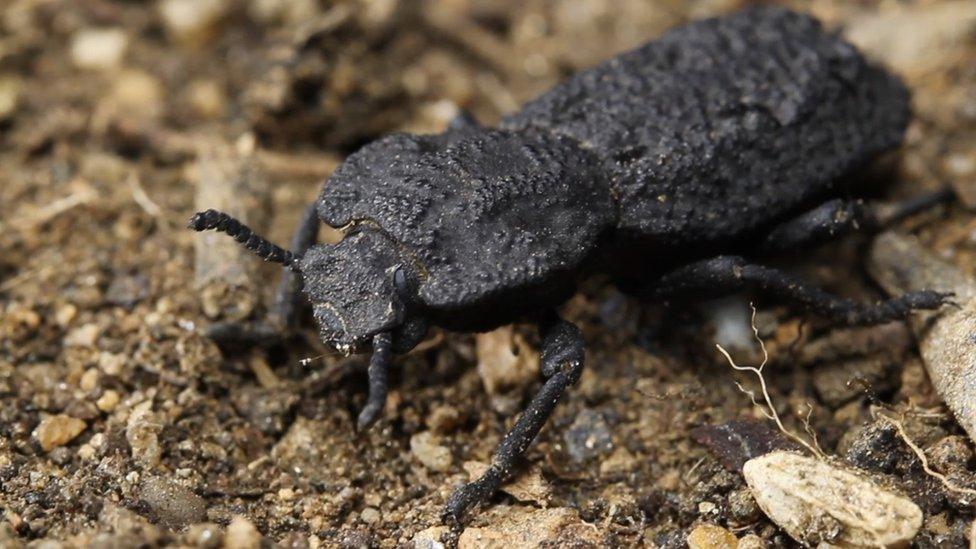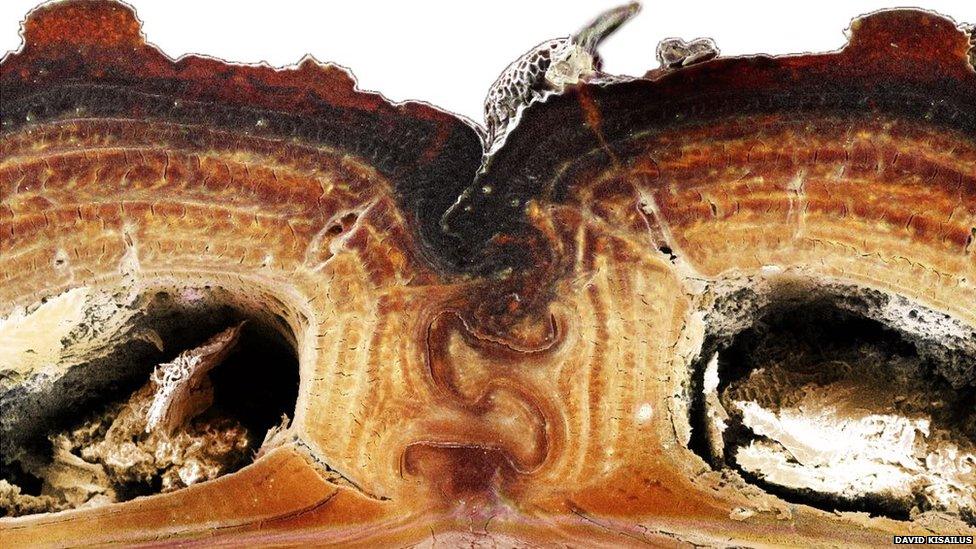Secrets of the 'uncrushable' beetle revealed
- Published

The beetle can't fly but feigns death to escape from predators
The diabolical ironclad beetle is one tough critter, as its name might suggest.
Equipped with super-tough body armour, the insect can survive being stamped on or even run over by a car.
Now scientists have investigated the secrets of how the beetle can withstand forces up to 39,000 times its body weight.
And the findings could give clues to building tougher materials for use in construction and aeronautics.
The research, published in the journal Nature, could lead to "tough, impact- and crush-resistant materials", says a team led by David Kisailus of the University of California, Irvine.
The diabolical ironclad beetle (Phloeodes diabolicus) is found mainly in the US and Mexico, where it lives under the bark of trees or beneath rocks. The beetle has one of the toughest exoskeletons of any known insect.
Early insect collectors became aware of this when trying to mount specimens to boards with standard steel pins. Their pins bent and snapped, and they had to resort to a drill to penetrate the tough outer casing.
The beetle, having lost the ability to fly away from danger, has evolved crush-resistant forewings (known as elytra), to survive being pecked to death by hungry birds.

The beetle's exoskeleton has interlocking joints that make it exceptionally tough
The researchers used microscopy, spectroscopy and mechanical testing, to identify a series of interlocked jigsaw-shaped joints within the exoskeleton, which allow the beetle to withstand forces of up to 149 Newtons (approximately 39,000 times the creature's body weight).
To test the potential of this type of structure as a way of joining different materials, such as plastics and metal, the scientists made a series of joints from metal and composites based on those seen in the beetle. They say their designs enhanced the strength and toughness of the materials.
Other natural materials, such as bones, teeth and shells, have long served as inspiration for scientists seeking to develop new materials.
Many have exceptional mechanical performance, as well as strength, toughness and the ability to self-heal.
Follow Helen on Twitter, external.